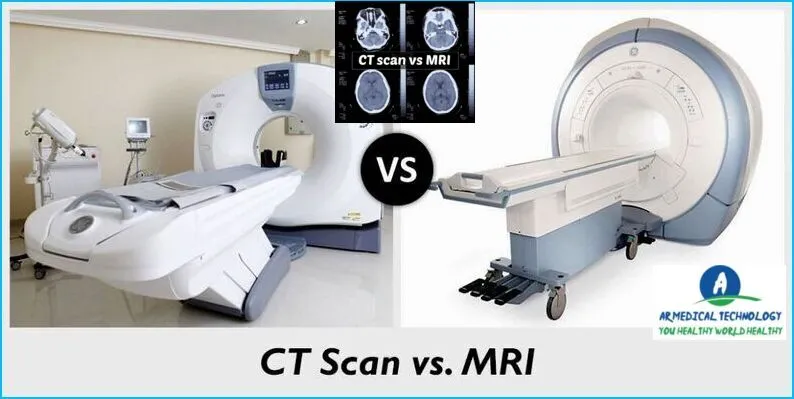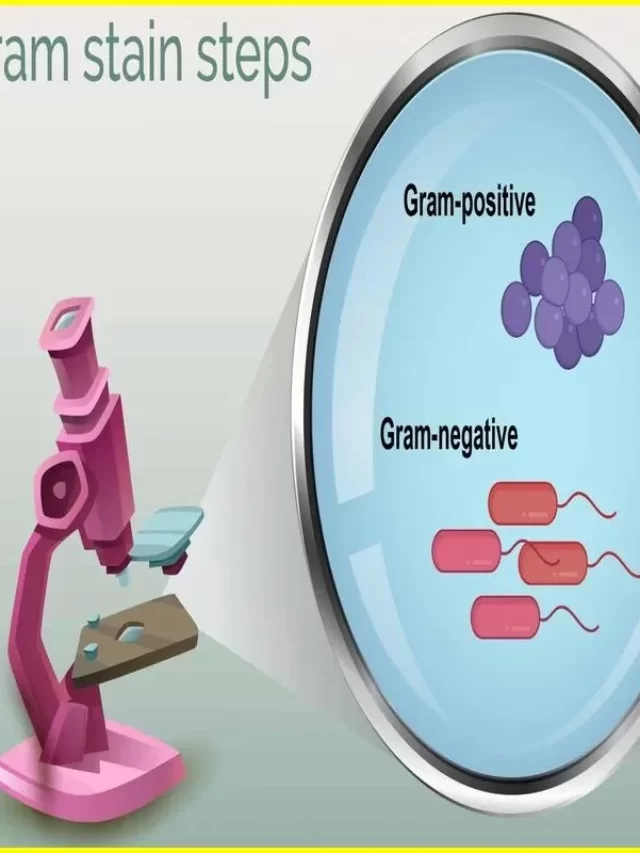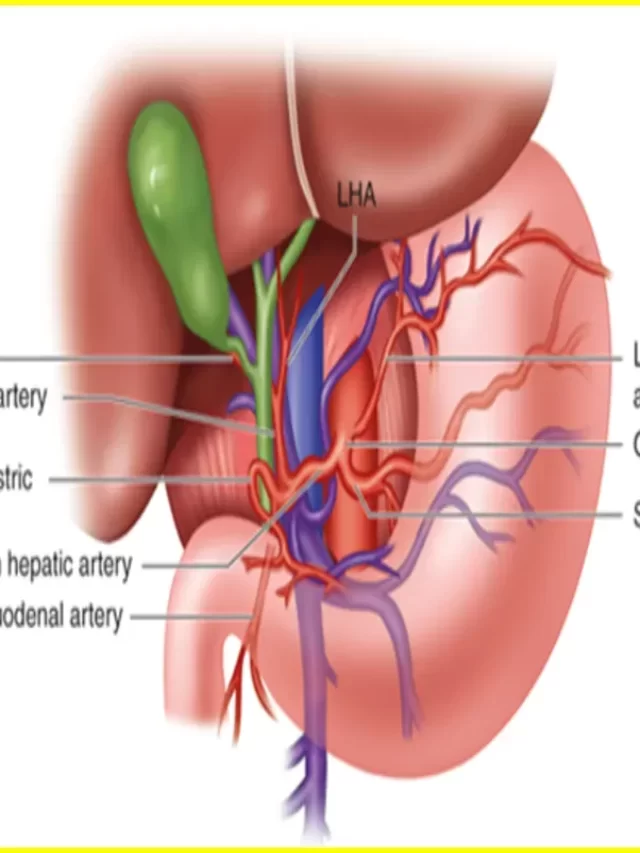
difference between mri and ct scan
Difference Between MRI and CT Scan
A CT scan quickly takes a succession of X-ray images, which are then combined to provide an image of the scanned region. Strong magnetic fields are used in an MRI to create images of the inside of the body. For imaging, CT scans are typically the first option. For some disorders that a CT scan is unable to identify, MRIs are helpful.
It can be challenging to stay on top of the many different imaging tests available. The two most popular imaging procedures are CT and MRI scans. What distinguishes them from one another, then? While CT scans utilize X-rays to produce cross-sectional images of your body, MRIs employ radio waves and powerful magnets to make images of your body. Though each test has advantages and disadvantages of its own, they may both be used to identify a range of illnesses. We’ll contrast MRIs and CT scans in this blog article so you can see when either could be necessary.

Difference Between MRI and CT Scan
Magnetic Resonance Imaging (MRI) and Computed Tomography (CT) scans are both medical imaging techniques, but they use different principles to generate images and serve different purposes. Here are the key differences between MRI and CT scans:
- Principle of Imaging:
- MRI: It relies on the interaction of hydrogen atoms in the body with strong magnetic fields and radiofrequency pulses. The signals emitted by these atoms are used to create detailed cross-sectional images.
- CT Scan: It uses X-rays to produce cross-sectional images of the body. X-rays pass through the body, and detectors measure the amount of radiation that reaches them. The data is processed by a computer to generate images.
- Radiation Exposure:
- MRI: Does not use ionizing radiation, making it a radiation-free imaging technique.
- CT Scan: Involves exposure to ionizing radiation, which may pose a risk, especially with repeated scans.
- Contrast Agents:
- MRI: Contrast agents, typically based on gadolinium, may be used to enhance visibility of certain structures or abnormalities.
- CT Scan: Contrast materials containing iodine are often used to highlight blood vessels and certain tissues during a CT scan.
- Soft Tissue Contrast:
- MRI: Excellent for visualizing soft tissues, such as the brain, muscles, and internal organs, and is particularly effective in distinguishing between different types of soft tissue.
- CT Scan: Better for visualizing bones and dense structures, but may not provide as much contrast for soft tissues as MRI.
- Imaging Speed:
- MRI: Typically takes longer to acquire images compared to CT scans.
- CT Scan: Offers faster imaging, making it more suitable for emergency situations.
- Sensitivity to Motion:
- MRI: Sensitive to motion, and patient movement during the scan can affect image quality.
- CT Scan: Less sensitive to motion artifacts, making it more suitable for imaging patients who may have difficulty remaining still.
- Applications:
- MRI: Commonly used for imaging soft tissues, joints, the brain, spinal cord, and certain musculoskeletal conditions.
- CT Scan: Widely used for imaging the head, chest, abdomen, pelvis, and for detecting fractures in bones.
Article About:- Health & fitness
Article About:- Medical Technology
Article About:- Sports

There are some key differences between MRI and CT:
- CT uses X-rays, while MRI does not.
- MRI provides better soft tissue contrast than CT. This means that MRI is better at visualizing things like tumors and inflammation.
- MRI is typically more expensive than CT.
- CT can be used to guide biopsies and other procedures, while MRI cannot.
What is the Difference Between MRI and CT Scan
There is a big difference between MRI and CT Scans. CT Scans use X-rays to create detailed images of your body, while MRI uses strong magnets and radio waves to produce images. MRI is better for looking at soft tissues, while CT is better for looking at bones.
Which is better a CT scan or MRI?
Since MRI scans are thought to provide more precise images, they are frequently utilized to diagnose disorders involving the joints, organs, or bones. To find any internal bleeding, tumors, or fractures in the bones, CT scans are frequently utilized. An MRI scan may be necessary for the following reasons: damaged ligaments.
Difference Between MRI and CT Scan Machines
There are several key differences between MRI and CT scan machines that are important to consider when choosing which imaging system is right for you. Cost is one factor that often comes into play – MRI machines tend to be more expensive than CT scanners. Another important difference is how the two types of machines create images. CT scans use X-rays, while MRIs use magnetic fields and radio waves. This results in different image quality, with MRI providing clearer, more detailed images. Finally, MRIs can take longer to perform than CT scans, and some people may find the enclosed space of the MRI machine claustrophobic.
What are the disadvantages of MRI scan?
If proper ear protection is not utilized, the loud pounding noises caused by the magnetic fields that fluctuate over time might damage hearing. Additionally, they could stimulate peripheral nerves or muscles, which could result in a twitching feeling. The body may get heated as a result of the radiofrequency radiation utilized in the MRI scan.
What’s the Difference Between MRI and CT Scan
The two main types of imaging tests are x-rays and MRI. CT scan is a type of x-ray. MRI does not use x-rays.
Both MRI and CT scans create images that show the inside of your body in great detail. But there are some important differences between these two tests.
MRI uses strong magnets and radio waves to create detailed images, while CT scans use x-rays. MRI is very good at showing soft tissues, such as the brain or nerves, while CT scans are better at showing bones and hard tissues.

MRI is usually done first if your doctor suspects you have a problem with your brain or nervous system, because it provides more detailed information than a CT scan. If the MRI shows an abnormality, then your doctor may recommend a CT scan to get more information about that specific area.
Difference Between MRI and CT Scan of Brain
Brain CT and MRI scans differ from one another in a few important ways. First off, a CT scan employs X-rays to produce detailed pictures, whereas an MRI uses magnetic fields and radio waves. Second, a CT scan can only display hard bones; an MRI can display both soft tissue and hard bones. Thirdly, the cost of an MRI exceeds that of a CT scan. Lastly, although CT scans are more appropriate for identifying diseases connected to injuries and other conditions involving the skull, MRI may be utilized to diagnose conditions like tumors and strokes.
FAQ
Which is better CT scan or MRI?

Since MRI scans are thought to provide more precise images, they are frequently utilized to diagnose disorders involving the joints, organs, or bones. To find any internal bleeding, tumors, or fractures in the bones, CT scans are frequently utilized. An MRI scan may be necessary for the following reasons: damaged ligaments.
What can a CT scan do that an MRI Cannot?

In general, contrast resolution is greater with MRIs, while spatial resolution is better with CT scans. This implies that CT scans are useful for identifying boundaries, or the points at which one structure finishes and another begins.
Which scan is best for brain?

When it comes to brain imaging, magnetic resonance imaging (MRI) yields remarkably precise and intricate pictures of the human brain, enabling medical practitioners to evaluate its structure and identify any anomalies. Since MRI doesn’t use ionizing radiation as CT or X-rays do, it’s a safer alternative for repeated imaging.
Is a CT scan or MRI better for nerve damage?

An MRI may be more effective in identifying soft tissue issues such as pinched nerves, bulging discs, minor disc herniations, and spinal cord abnormalities.
Is CT scan or MRI more expensive?

Cost: The cost of a CT scan is about half that of an MRI. An MRI often costs $2,000. A computed tomography scan typically costs around $1,200. Quickness: CT scans require a lot less time than MRIs. The precise amount of time needed will depend on whether you need a contrast dye for the operation, but the scan for an MRI always takes longer.
Why is MRI safer than CT?

A strong magnet is used in magnetic resonance imaging (MRI) to send radio waves through the body. The body’s protons respond to the energy and produce very detailed images of all the organs and tissues, including blood arteries, nerves, and soft tissues. An MRI doesn’t employ radiation, in contrast to CT and X-ray scans.
Which is less harmful CT or MRI?

According to estimates from the U.S. Food and Drug Administration, there is an approximately 1 in 2,000 chance that a standard CT treatment may increase a person’s risk of dying from cancer. Since ionizing radiation is not used in MRIs, there is no chance of cancer being increased. However, they take a lot longer to finish than CTs.









